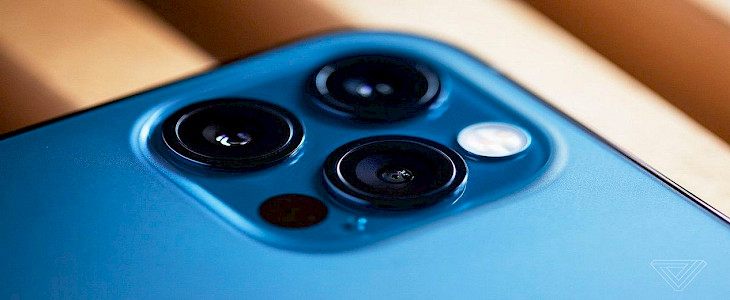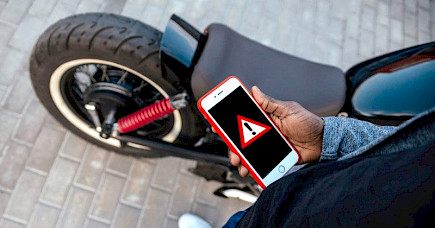
Mobile photography is quite unique in itself. No multiple lenses are required, no heavy-duty gadgets are needed. Just whip the app out and click the shutter. That’s it!
But, is it really so simple? Well, it's not.
Even in mobile photography, one has to take care of a lot of things. Light, ISO, Exposure everything plays an important role. But, one factor which can highly alter the quality of a photo is noise and vibration from the background.
Recently, there has been an uproar among people regarding the camera module of iPhones and how they react to constant vibration. In most cases people have found out -- Too much vibration is affecting the quality of the camera setup. So, is the rumor legit?
Well. Let’s find out together...
Apple States, Vibration May Harm Your iPhone Camera
When your iPhone is subjected to large amplitude vibrations within particular frequency bands, such as those produced by high-powered motorbike engines, the camera system's performance might suffer.
Apple says motorcycle vibrations can damage iPhone cameras https://t.co/ThlOrYJYBm pic.twitter.com/Zjx2VaaBOZ
— Engadget (@engadget) September 11, 2021
From ordinary moments to studio-quality portraits, the iPhone camera enables you to shoot beautiful photographs in every scenario. Some iPhone models have sophisticated camera systems with features like optical image stabilization and closed-loop autofocus to help you take beautiful photographs even in challenging situations. These technologies operate to automatically compensate for movement, vibrations, and gravity impacts, allowing you to concentrate on capturing a beautiful image.
When you move a camera by accident while taking a photo, the outcome might be a fuzzy image. Some iPhone models feature optical picture stabilization to prevent this (OIS). OIS allows you to shoot crisp images even if the camera is unintentionally moved. A gyroscope detects camera movement using OIS. The lens rotates in accordance with the angle of the gyroscope to decrease image motion and blur.
Closed-loop autofocus is as well made available on select iPhone models.
Two Closed-loop AF will resist the effects of gravitational force and vibration in stills, movies, and panoramas to maintain a crisp focus. On-board magnetic sensors monitor gravity and vibration impacts and calculate the lens position with closed-loop AF, allowing the compensatory motion to be adjusted precisely.
The iPhone's optical image stabilization (OIS) and closed-loop autofocus (AF) technologies are built to last.
Long-term direct exposure to high-amplitude vibrations within particular frequency ranges may damage the function of these systems and result in decreased picture quality for images and movies, as is the case with many consumer gadgets that feature systems like OIS. It is highly advisable to avoid exposing your iPhone to prolonged high-amplitude vibrations.
Motorcycle engines having high power or volume produce severe high-amplitude vibrations that are transferred via the chassis and handlebars. Due to the amount of vibration in specific frequency bands that are generated by motorbikes having high-power or high-volume engines, it is not suggested to link or mount your iPhone to them.

Using a vibration dampening attachment to reduce the potential of damage to your iPhone and its OIS and AF systems is suggested. To reduce the danger of damage, it's also a good idea to avoid using it on a regular basis for lengthy periods of time.
Is it safe to mount iPhone with a motorbike?
Probably yes, unless we see a Gimbal being launched in the coming time that's specifically designed to absorb the motorcycle vibrations.

Apple claims that high-intensity vibrations will affect iPhone models with optical image stabilization (OIS), which includes all iPhones starting with the iPhone 6, and devices with closed-loop Auto-focus, which includes the iPhone XS and beyond. The iPhone SE (2nd generation) is also on the list. Both OIS and Closed-loop AF systems use complex mechanics to adjust the lens assembly for the greatest image quality.
Because the ultra-wide camera sensor and the telephoto camera on these iPhones lack OIS, the primary sensor will sustain the brunt of the damage. Mounting your iPhone to the handlebars of vehicles with lower-amplitude vibration engines, such as scooters and mopeds, may be less dangerous, but users should still use a vibration-damping mount, according to Apple.
The Verdict
So, after a deep research on the topic, we can say-
“Long-term exposure to high-frequency vibration does affect the efficiency of the camera module. But, if are cautious about your surrounding and use your device wisely you will have no problems at all”.





